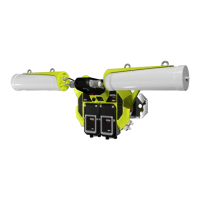12
2019 MST Global Commercial in Confidence
XON Digital Plat
orm
User Manual
Revision A
Diversity panel antenna
diversity panel antenna contains two panel
antennas in one housing with a 90° rotation
between them. It is used for providing better
signal reception in difficult areas, and more
accurate Wi-Fi tag location when Wi-Fi
tracking is implemented. Diversity antennas
use both antenna connections on a WAC.
agi directional antenna
Yagi antenna is high gain directional
antenna. They are ideally suited for line of
sight tunnel communications. Yagi antennas
need to be aimed accurately and avoid
obstacles in their RF beam path.
4.4
Placement of AXON Air units
In underground environments, many factors can influence finding a suitable location for mounting of
the AXON Air access point and antennas connected to it. This document will only consider the signal
propagation aspects, see AXON Air Mounting Options for more advice.
4.5
Placement of Antennas
It is recommended to attach the antennas directly, or with a short good quality coaxial cable, to the
access point. The antenna can be connected up to 20m away from the access point when at
minimum CNT or LMR 400 antenna cable is used. At 2.4 GHz the loss of this cable is approximately
2.1 dB per 10m. It will reduce the effectiveness of the antenna however it may be acceptable with the
use a of high gain antenna. The coaxial connection should be kept as short as possible to minimise
signal attenuation. Larger antennas / longer cable feeds can require line amplifiers, and possibly bi-
directional splitter / combiners for dual antenna systems.
In surface installation to ensure EN 60950-1 compliance, AXON Air, the antenna and all cabling must
be installed in a location that eliminates the chance of the system being struck by lightning. If an
antenna needs to be installed in a location where it could be struck by lightning, then an appropriate
lightning arrestor must be placed in-line with the antenna and cabling such that AXON Air is not
subject to overvoltage due to lightning.
Antenna placement underground is dependent on the surrounding geology, tunnel topology and
stratum type. The recommended placement of antennas is as follows:
Tip 1: Directionality
Antennas should be mounted and angled to give optimum transmission along curves and dips as
shown below in Figure 5: Angling antennas.
Figure 5: Angling antennas

